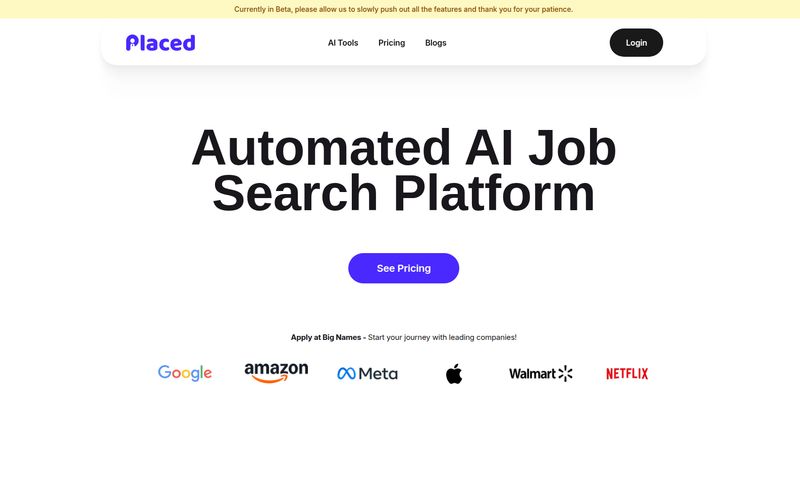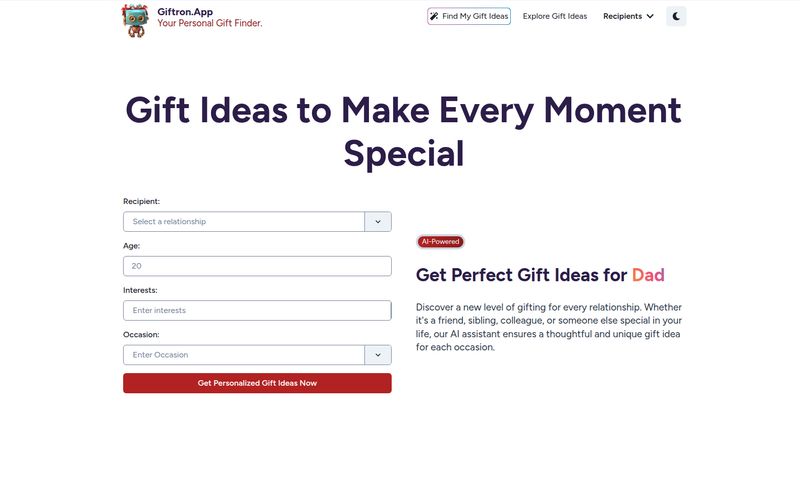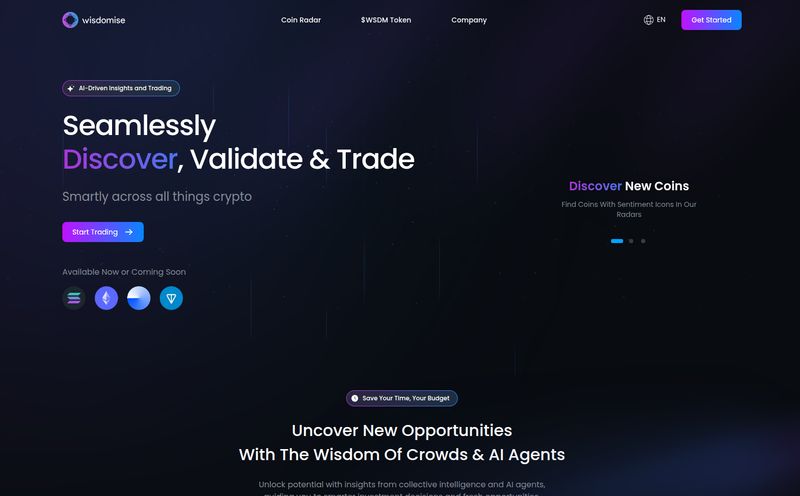No, don't close the tab! I get it. For most of us, looking at our finances feels like staring into an abyss... an abyss filled with forgotten subscriptions, a half-dozen different banking apps, and that one crypto investment you made at 2 AM after reading a Reddit thread. It’s organized chaos at best.
I'm always on the hunt for something, anything, to make it simpler. So when I heard about a platform called Money Owl, promising an "intelligent" way to manage it all, my interest was piqued. When I first navigated to their site, I was greeted by a stark, black loading screen. It felt… oddly appropriate. A "service waking up," it said. Isn't that what we all secretly want for our own financial lives? A grand awakening?
The Financial Mess We All Know and Loathe
Before we get into what Money Owl does, let's just acknowledge the shared struggle. My financial picture used to be scattered across the digital winds. I had my main checking account with a traditional bank, a high-yield savings account with an online-only bank, a brokerage account for ETFs, another app for playing with individual stocks, and a couple of crypto wallets. Trying to get a single, clear number for my net worth was an exercise in frustration that required a spreadsheet so complex it would make an accountant weep.
And budgeting? Forget about it. Manually categorizing every single transaction is a soul-crushing task that I, like most people, would abandon after about three weeks. This is the problem that fintech apps are trying to solve, and it’s the ring Money Owl is stepping into.

Visit Money Owl
So, What Exactly Is Money Owl?
At its core, Money Owl is a personal finance command center. It’s a platform designed to plug into all your different financial institutions—banks, investment brokers, you name it—and pull all that information into one, cohesive dashboard. The goal is to give you a bird's-eye view of your entire financial world without having to hop between ten different apps and websites.
More Than Just a Pretty Dashboard
But it's not just about looking at your numbers. The platform is built to help you actively manage them. It's about tracking your spending, monitoring your investments, keeping an eye on your net worth, and even sniffing out those pesky subscriptions you forgot you were paying for. And for the premium users, there’s an AI component that promises to offer personalized advice. It’s an ambitious pitch, for sure.
The Features That Actually Matter
A platform can have a million features, but only a few really change the game. After digging around, here’s what stood out to me about Money Owl.
The All-Seeing Wealth Dashboard
This is the heart of the platform. The ability to see your checking, savings, investments, and assets all in one place is, frankly, what we're all here for. The bank integrations are key. Money Owl claims to connect to a wide range of institutions, and this automation is what separates a modern tool from a glorified spreadsheet. Seeing your net worth update automatically without you lifting a finger? That’s a little dopamine hit right there. It turns a chore into something you actually want to check.
The AI Financial Agent: Your Personal Money Guru?
This is the shiny object, the feature that makes you go, "Ooh." Available in the Premium plan, the AI-powered financial agent is designed to be your digital co-pilot. It analyzes your spending habits and financial data to offer customized insights. For example, it might flag that your "dining out" category is creeping up or suggest ways to optimize your savings. Is it going to give you groundbreaking stock picks? No, and it shouldn't. But as a system for accountability and pattern recognition, it’s a fascinating concept. I see it as a way to catch your own bad habits before they spiral.
Kissing Spreadsheet Budgeting Goodbye
The expense tracking and budget planning tools are foundational. By pulling in your transactions automatically, the heavy lifting is done for you. You can set up budgets for different categories (groceries, transport, fun money) and see in real-time how you're tracking. For me, the biggest win here is the subscription management. It helps you find all those recurring charges, from Netflix to that weird app you downloaded once. It’s amazing how much money can leak out of an account through €5 and €10 charges you completely forgot about.
How Much Does Money Owl Cost? A Look at the Pricing
Alright, let's talk money. Money Owl is a premium product, and I’m honestly fine with that. When a service is dealing with my financial data, I prefer to be the customer, not the product being sold to advertisers. They offer two main tiers.
| Plan | Price | Who It's For |
|---|---|---|
| Basic | €78 / year | This is for the person who wants to get organized. You get the wealth dashboard, budgetting tools, subscription management, and bank integrations. It’s the core experience. |
| Premium | €117 / year | This is for the data-driven optimizer. You get everything in Basic plus the AI financial agent, customized insights, and priority support. You want the tool to not just show you data, but help you interpret it. |
The Not-So-Great Parts (Let's Be Honest)
No tool is perfect. In my experience, the biggest hurdle is almost always the setup. Connecting all your bank accounts, especially if you have two-factor authentication on everything, can be a bit of a slog. It’s a one-time pain point, but it's there. You need to set aside an hour and just power through it.
And of course, the fact that the most exciting feature—the AI agent—is behind the pricier Premium subscription might be a downside for some. You have to decide if those automated insights are worth the extra cost over the already powerful Basic plan.
My Final Verdict: Is Money Owl Worth It?
So, is Money Owl the magic bullet for your financial woes? Not exactly. No app can force you to save money or make smart investments. That part is still on you.
But what Money Owl does, and seems to do well, is remove the friction. It clears away the clutter. It takes the most annoying parts of personal finance—the data gathering and the manual tracking—and automates them. It presents your financial life in a way that’s easy to understand and, dare I say, almost engaging.
For someone who feels overwhelmed by financial disorganization, the Basic plan is a fantastic starting point. For the person who loves data and wants to find every possible edge, the Premium plan's AI features could be a powerful ally. I also have to give them credit for being compliant with EU privacy standards; in this day and age, that’s a huge plus.
Ultimately, Money Owl is a powerful tool in the right hands. It’s a financial co-pilot that can help you steer, but you still have to be the one flying the plane. And for many of us, just having a clear view from the cockpit is half the battle won.
Frequently Asked Questions about Money Owl
- Is Money Owl safe to use with my bank accounts?
- Money Owl uses bank integrations that typically rely on secure, read-only access through trusted third-party providers. Plus, being compliant with EU privacy standards (like GDPR) suggests a strong focus on data security and user privacy, which is a very good sign.
- What if my bank isn't supported?
- This is a common issue with aggregator apps. Most major institutions are usually supported, but smaller credit unions or regional banks can be hit-or-miss. It's best to check their list of supported banks before you commit to a subscription.
- Is the AI financial agent really useful?
- It depends on your expectations. If you expect it to be a personal stockbroker, you'll be disappointed. If you see it as an intelligent assistant that can spot trends in your own behavior—like an increase in spending or a forgotten subscription—then yes, it can be very useful for promoting mindfulness and accountability.
- Can I track cryptocurrency with Money Owl?
- The documentation mentions "asset monitoring," which often includes popular assets like crypto. Many modern finance trackers can connect to major exchanges like Coinbase or allow for manual entry of your crypto holdings. You'd want to confirm the extent of their crypto tracking capabilities.
- Is there a free trial for Money Owl?
- The pricing information doesn't mention a free trial, but many SaaS companies offer one or have a money-back guarantee. It's always worth checking their official website for the most current offers before signing up for a full year.
- Who is Money Owl's main competitor?
- In the personal finance space, Money Owl competes with established players like Mint (in North America), Personal Capital (now Empower Personal Dashboard), and other European-focused apps like Spiir or YNAB (You Need A Budget), though YNAB has a much more hands-on philosophy.



